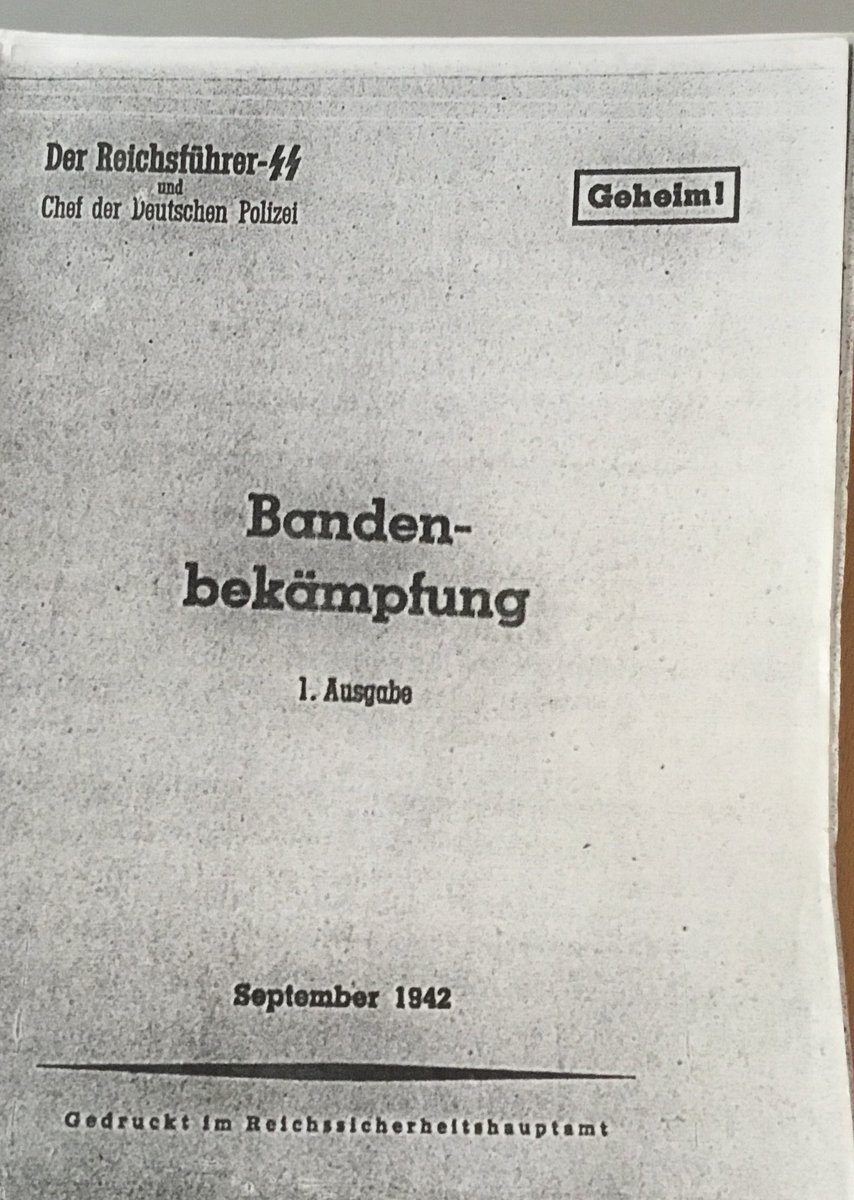
Warning some sensitive content.
2022 - is the 80th anniversary year of Hitler’s Bandenbekämpfung Directive. This thread is the first in a series of threads uploaded through this year.
2022 - is the 80th anniversary year of Hitler’s Bandenbekämpfung Directive. This thread is the first in a series of threads uploaded through this year.
Bandenbekämpfung was the Nazi concept of a war against insurgency. There was much discussion over the definition of the partisan as an illegal combatant. Copy of the first discussion document, but conferences and planning began in March 1942.
Image: PWB
Image: PWB

The reason for its implementation had been the increasing partisan problem in Russia, Yugoslavia and Slovenia. Throughout the latter half of 1941 the SS-Police and the army attempted to address the problem to be more effective in security warfare.
Image: @BundesarchivD
Image: @BundesarchivD

Various ideas were considered including combining SS security forces in operations with the army. A basic outline was presented to Hitler and he signed Directive No.46 on 18 August 1942. All anti-partisan doctrine was replaced by combating-banditry doctrine - Bandenbekämpfung.
Not to be out done by the SS, the army’s Chief of Staff added his thoughts just before being relieved. He recommended Jagdkommandos - hunting squads - using hunting methods to counter the partisans.
Image: @BundesarchivD
Image: @BundesarchivD

Himmler selected a Nazi zealot to run his new project - Erich von dem Bach-Zelewski. B-Z’s reputation included killing rivals, setting the first rules for Auschwitz and the Holocaust by Bullets in AG Centre rear area.
Image: @BundesarchivD
Image: @BundesarchivD

Initially, the Germans adopted encirclement as the primary operational method solely to destroy all partisans in the trap. This mass extermination was applied to partisan helpers and innocents alike, anyone caught in the trap.
Image: @BundesarchivD
Image: @BundesarchivD

Gradually, other tactical methods began to take shape. Hunting dogs, Kriegsmarine riverine ops, air support and field interrogations.
Images: @BundesarchivD @USNatArchives



Images: @BundesarchivD @USNatArchives




Small unit actions adopted the Auftragstaktik concept to its most effective. Squads with machine-guns worked on snatch-actions, aimed at taking out partisan leaders etc.
Image; @USNatArchives
Image; @USNatArchives

As operations increased in size and number, certain leading practitioners began to acquire a vile reputation for brutality. Dirlewanger, Fegelein and Bittrich being prominent from 1942 and later Curt von Gottberg.
Images: @BundesarchivD


Images: @BundesarchivD



The Luftwaffe were also involved. Fliegergruppe z.b.V.7 was ‘loaned’ to Himmler by Göring. Also Luftwaffe aviators in training flew ground attack missions with combat aircraft. Explains why aircraft are seen bombing Warsaw in 1944 during the pacification phase.
Image: PD

Image: PD


#Totenzonen - another tactic was to create wastelands after operations, to prevent partisans from using the land to live off. The scale of this destruction is now reintroduced in the Ukraine by Putin’s forces
Image: @USNatArchives
Image: @USNatArchives

In January 1944, the SS struck the Bandenkampfabzeichen based upon the number of days committed to Bandenbekämpfung.
Image: PWB
Image: PWB

After the war, Bach-Zelewski was very nearly prosecuted in a war crimes trial against Bandenbekämpfung. He escaped by pretending to be a turncoat.
Image: @USNatArchives
Image: @USNatArchives

This thread should be of interest to friends and followers who have requested more SS content.
Also please support @WW2TV where I briefly discussed some of this content:
Also please support @WW2TV where I briefly discussed some of this content:
• • •
Missing some Tweet in this thread? You can try to
force a refresh















